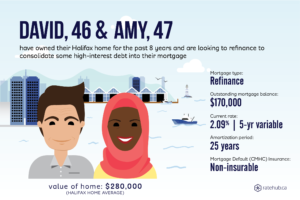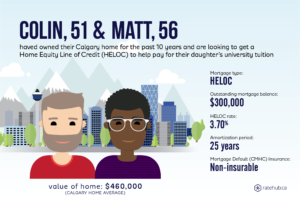Special to the Financial Independence Hub
The mortgage market in Canada is heavily regulated. Both the federal government and the Canada Mortgage and Housing Corporation (CMHC) control almost every aspect of residential mortgage lending.
The government decides what criteria people must meet when getting a mortgage in Canada. Rules apply to almost every aspect of the mortgage, ranging from the maximum amortization to the minimum down payment required when buying a home.
In the last few years, the government has taken action in response to rapidly rising house prices in an effort to keep people from taking on mortgages they can’t afford. A number of changes have been made to mortgage rules since 2012. Dry descriptions of the changes make it difficult to understand their true effect.
Instead, let’s take a look at some examples of how some recent mortgage rule changes affect their ability to borrow.
Sarah and Rachel
 Even though Sarah and Rachel are choosing a three-year fixed mortgage with a rate of 2.39% for their condo purchase, new “stress testing” rules introduced in October 2016 mean they have to qualify at a substantially higher mortgage rate than they’ll actually get. The qualifying rate is set by the Bank of Canada (BoC), and is currently 4.84%. When checking a mortgage payment calculator, they find that even though their monthly payment will be $2,352 at their chosen rate, they’ll need to prove they can afford payments of $3,043.
Even though Sarah and Rachel are choosing a three-year fixed mortgage with a rate of 2.39% for their condo purchase, new “stress testing” rules introduced in October 2016 mean they have to qualify at a substantially higher mortgage rate than they’ll actually get. The qualifying rate is set by the Bank of Canada (BoC), and is currently 4.84%. When checking a mortgage payment calculator, they find that even though their monthly payment will be $2,352 at their chosen rate, they’ll need to prove they can afford payments of $3,043.
A new rule pertaining to minimum down payments that came into effect in February 2016 will apply to Sarah and Rachel as well. The minimum down payment on a home sold for over $500,000 was raised to 5% of the first $500,000, and 10% of any amount thereafter. For their $540,000 purchase, Sarah and Rachel have to save a little longer: the minimum down payment went up to $29,000 from $27,000. They’ll also need to pay for CMHC insurance since their down payment is less than 20%.
Finally, the maximum amortization (the time over which you repay your mortgage) on insured mortgages has been reduced to 25 years as of 2012 from from 40 years in 2008. Sarah and Rachel won’t have the option of paying their mortgage over a longer period of time.
David and Amy
 Looking to refinance their Halifax home, David and Amy are in excellent financial shape. But a change to mortgage rules that prohibits lenders from bulk insuring refinanced mortgages means they might have a more difficult time finding a lender to work with.
Looking to refinance their Halifax home, David and Amy are in excellent financial shape. But a change to mortgage rules that prohibits lenders from bulk insuring refinanced mortgages means they might have a more difficult time finding a lender to work with.
That change came in November 2016 and limited lenders’ ability to purchase insurance on a number of different mortgage types including refinances. In response, some raised rates and others stopped funding those types of mortgages. Fortunately, consumers don’t need to take on the task of finding a willing lender. David and Amy are using a mortgage agent to help find a lender for their refinancing.
Colin and Matt
 This Calgary couple is looking to borrow against their home to fund their daughter’s university education will be limited by mortgage rules controlling the amount of equity Canadians can take out of their homes.
This Calgary couple is looking to borrow against their home to fund their daughter’s university education will be limited by mortgage rules controlling the amount of equity Canadians can take out of their homes.
There are two upper limits, which came into effect in June 2012. First, the amount of a home equity line of credit (HELOC) cannot be more than 65% of the value of the home. Second, the amount of the HELOC plus the outstanding mortgage balance cannot be more than 80% of the value of the home.
Since Colin and Matt owe $300,000 on their home worth $460,000, the maximum amount they’ll be allowed to borrow is $68,000 ($460,000 x 80% = $368,000 – $300,000 = $68,000).
Note that having sufficient equity isn’t the only barrier to getting a HELOC. Lenders will want to make sure you have enough income and good enough credit to pay interest on the loan. The may also want to have the home appraised at the borrower’s expense. And legal fees will also be incurred.
 Alyssa Furtado is a passionate entrepreneur, financial expert, digital marketer and educator, and founder of Ratehub.ca, a website that compares mortgage rates, credit cards, high-interest savings accounts, chequing accounts, and insurance with the goal to empower Canadians to search smarter and save money.
Alyssa Furtado is a passionate entrepreneur, financial expert, digital marketer and educator, and founder of Ratehub.ca, a website that compares mortgage rates, credit cards, high-interest savings accounts, chequing accounts, and insurance with the goal to empower Canadians to search smarter and save money.



